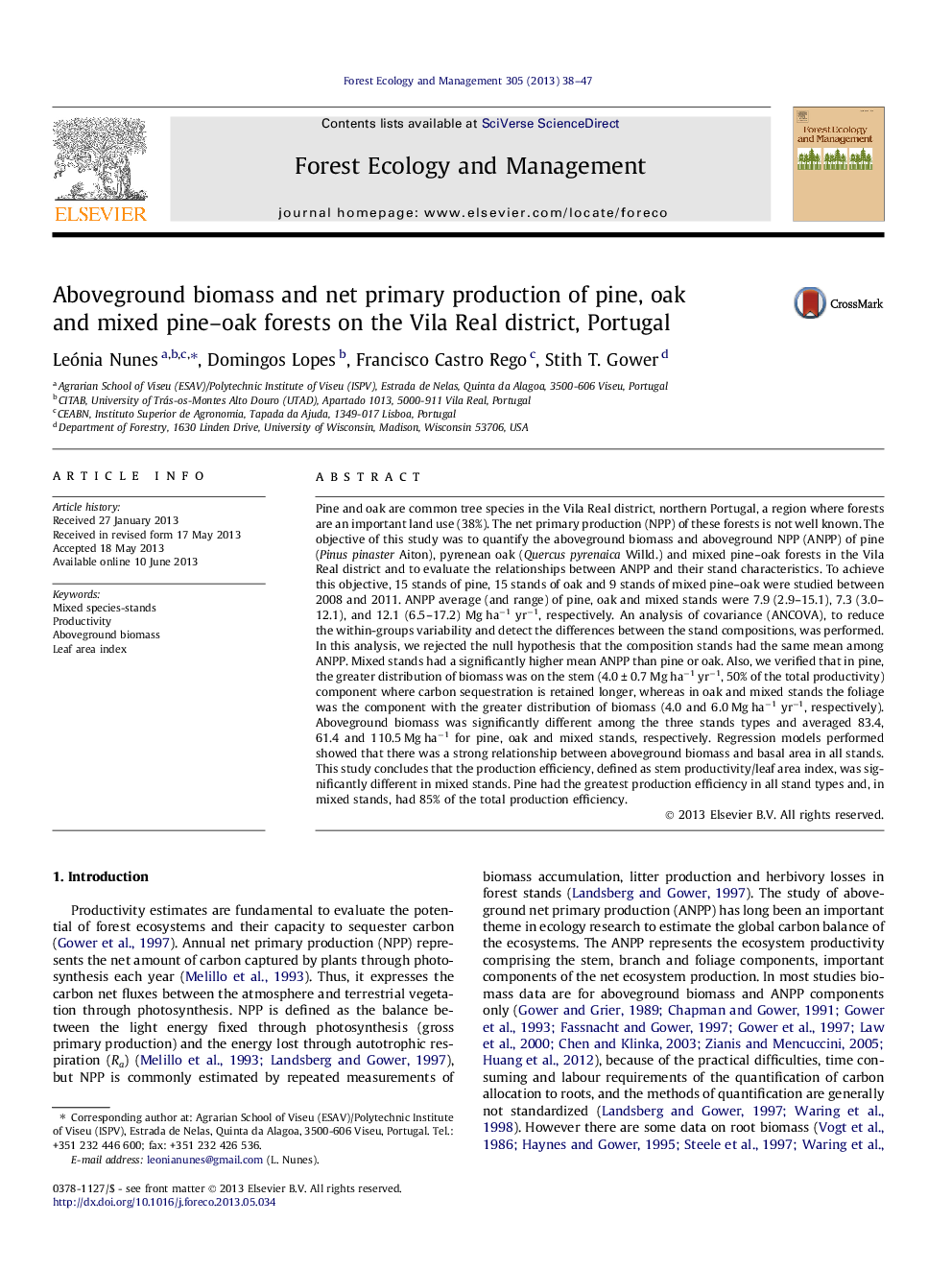| کد مقاله | کد نشریه | سال انتشار | مقاله انگلیسی | نسخه تمام متن |
|---|---|---|---|---|
| 86803 | 159215 | 2013 | 10 صفحه PDF | دانلود رایگان |

• Estimation of aboveground biomass and net primary production of pine, oak and pine–oak mixed stands.
• Mixed stands had significantly higher ANPP than the pure stands.
• Aboveground biomass was not significantly different among the 3 stands types.
• Stem NPP in mixed stands lower for each species than in pure stands.
• Production efficiency was significantly greater for mixed stands.
Pine and oak are common tree species in the Vila Real district, northern Portugal, a region where forests are an important land use (38%). The net primary production (NPP) of these forests is not well known. The objective of this study was to quantify the aboveground biomass and aboveground NPP (ANPP) of pine (Pinus pinaster Aiton), pyrenean oak (Quercus pyrenaica Willd.) and mixed pine–oak forests in the Vila Real district and to evaluate the relationships between ANPP and their stand characteristics. To achieve this objective, 15 stands of pine, 15 stands of oak and 9 stands of mixed pine–oak were studied between 2008 and 2011. ANPP average (and range) of pine, oak and mixed stands were 7.9 (2.9–15.1), 7.3 (3.0–12.1), and 12.1 (6.5–17.2) Mg ha−1 yr−1, respectively. An analysis of covariance (ANCOVA), to reduce the within-groups variability and detect the differences between the stand compositions, was performed. In this analysis, we rejected the null hypothesis that the composition stands had the same mean among ANPP. Mixed stands had a significantly higher mean ANPP than pine or oak. Also, we verified that in pine, the greater distribution of biomass was on the stem (4.0 ± 0.7 Mg ha−1 yr−1, 50% of the total productivity) component where carbon sequestration is retained longer, whereas in oak and mixed stands the foliage was the component with the greater distribution of biomass (4.0 and 6.0 Mg ha−1 yr−1, respectively). Aboveground biomass was significantly different among the three stands types and averaged 83.4, 61.4 and 110.5 Mg ha−1 for pine, oak and mixed stands, respectively. Regression models performed showed that there was a strong relationship between aboveground biomass and basal area in all stands. This study concludes that the production efficiency, defined as stem productivity/leaf area index, was significantly different in mixed stands. Pine had the greatest production efficiency in all stand types and, in mixed stands, had 85% of the total production efficiency.
Journal: Forest Ecology and Management - Volume 305, 1 October 2013, Pages 38–47